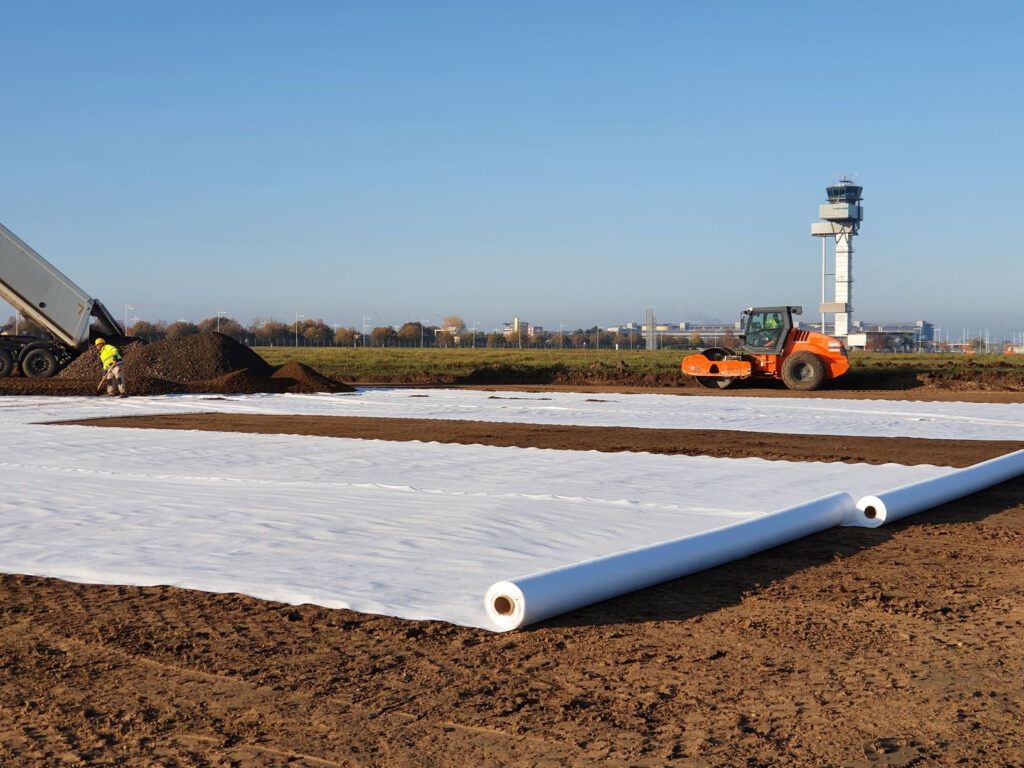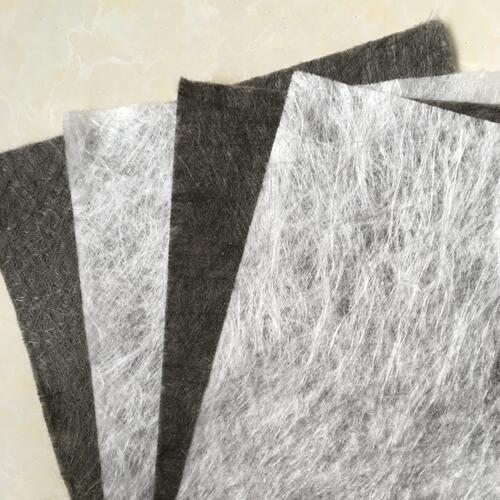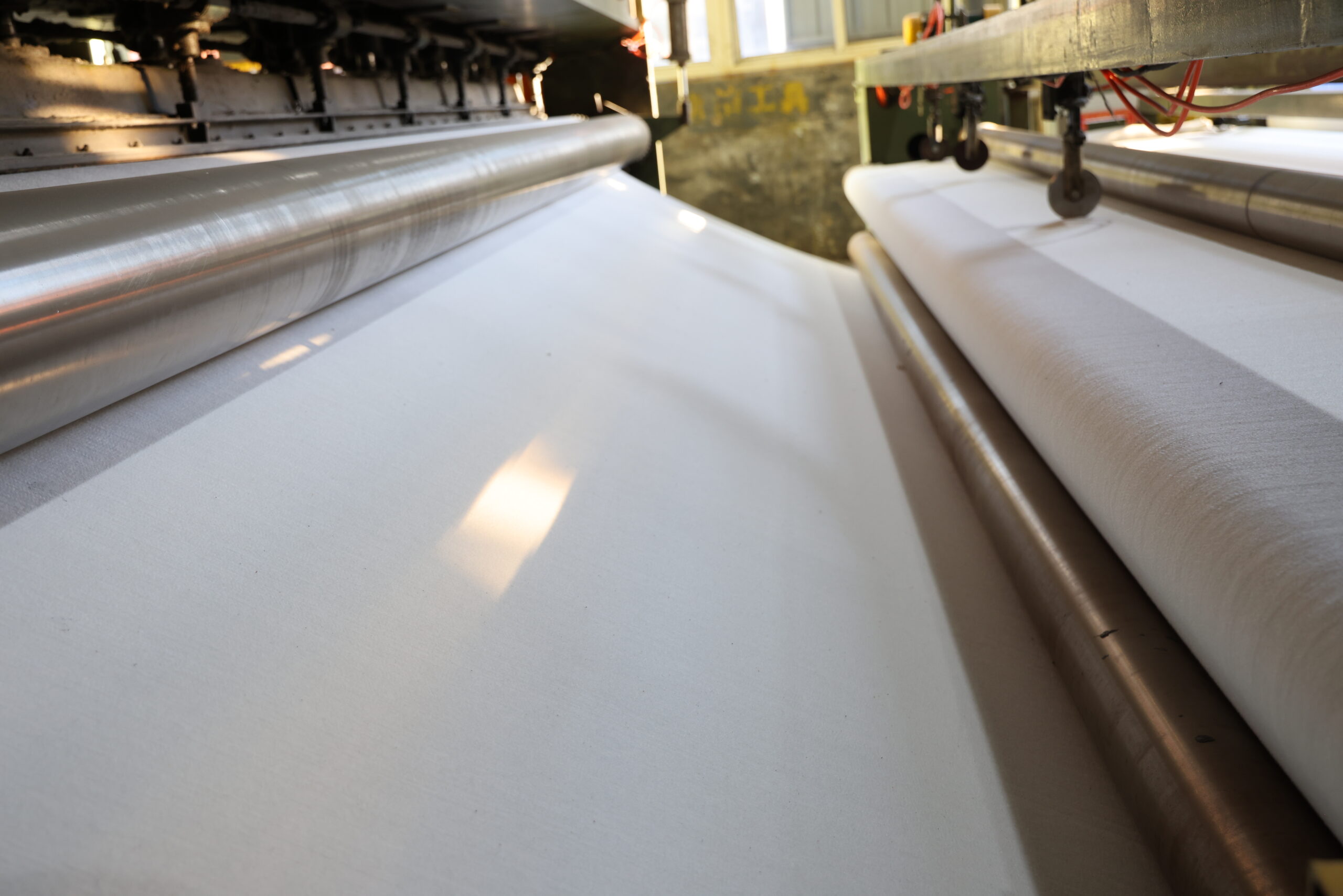What are the application scenarios of geotextiles?
Geotextiles are synthetic materials used in civil engineering and environmental applications to improve the performance of soil, rock, earth, or other geotechnical materials. They are commonly used for:
Soil stabilization: Geotextiles can be used to stabilize soil by preventing erosion and promoting vegetation growth. They help to retain soil particles while allowing water to pass through, reducing the risk of soil erosion due to water flow or wind.
Reinforcement: Geotextiles are used to reinforce soil in various construction projects, such as roads, embankments, retaining walls, and slopes. By distributing loads more evenly and reducing lateral movement, geotextiles increase the stability and strength of the soil.
Filtration: Geotextiles act as filters to prevent the mixing of different soil layers while allowing water to pass through freely. They are used in drainage systems, retaining walls, and other structures to prevent soil erosion and maintain stability.
Separation: Geotextiles are used to separate different soil layers or materials, such as gravel and soil, to prevent mixing and maintain the integrity of the structure. This is particularly important in road construction and landfills.
Drainage: Geotextiles can be used in drainage applications to facilitate the flow of water while preventing soil particles from clogging drainage systems. They are commonly used in road construction, retaining walls, and landfill liners.
Protection: Geotextiles provide protection to geomembranes and other lining materials used in environmental containment systems, such as landfill liners and reservoirs. They help to prevent damage from punctures, abrasion, and UV degradation.
Overall, geotextiles offer a cost-effective and environmentally friendly solution for various civil engineering and environmental applications, providing improved durability, stability, and performance compared to traditional construction methods.

What is the impact of not using geotextiles?
Not using geotextiles in relevant civil engineering and environmental projects can lead to several negative consequences:
Soil Erosion: Without geotextiles, soil erosion becomes more prevalent, especially in areas prone to heavy rainfall or high winds. Erosion can lead to loss of fertile topsoil, reduced land productivity, and environmental degradation.
Structural Instability: Geotextiles help stabilize soil and prevent the movement of particles, which is crucial for the structural integrity of various construction projects such as roads, embankments, and retaining walls. Without geotextiles, structures are more susceptible to settlement, slippage, and failure.
Poor Drainage: Geotextiles play a key role in drainage systems by allowing water to pass through while retaining soil particles. Without proper drainage facilitated by geotextiles, water can accumulate, leading to waterlogging, increased hydrostatic pressure, and potential damage to infrastructure.
Reduced Lifespan of Infrastructure: Infrastructure built without geotextiles may have a shorter lifespan due to increased vulnerability to environmental factors such as erosion, water damage, and soil movement. This can result in higher maintenance costs and the need for frequent repairs or replacements.
Environmental Damage: Soil erosion and poor drainage caused by the absence of geotextiles can have negative impacts on the surrounding environment, including sedimentation of water bodies, loss of habitat for wildlife, and contamination of water sources with sediment and pollutants.
Increased Costs: While geotextiles represent an initial investment, not using them can lead to increased costs over time due to the need for more extensive maintenance, repairs, and potential reconstruction of damaged infrastructure.
Overall, the absence of geotextiles can significantly compromise the performance, durability, and environmental sustainability of civil engineering and environmental projects, highlighting the importance of incorporating geotextiles into relevant applications.

What is the service life of geotextiles?
The service life of geotextiles can vary depending on several factors, including the type of geotextile, the environmental conditions, installation methods, and the specific application. In general, the service life of geotextiles can range from 5 to 50 years or more.
Type of Geotextile: Different types of geotextiles have varying levels of durability and resistance to environmental factors. For example, nonwoven geotextiles are typically less durable than woven geotextiles but may still have adequate service life for certain applications.
Environmental Conditions: The exposure of geotextiles to environmental factors such as UV radiation, temperature fluctuations, moisture, chemical exposure, and biological degradation can affect their service life. Geotextiles designed for outdoor applications are often treated to resist UV degradation and other environmental stresses.
Installation Methods: Proper installation techniques, including adequate anchoring, overlap, and protection from damage during construction, can extend the service life of geotextiles. Improper installation can lead to premature failure or reduced effectiveness.
Specific Application: The intended function and load-bearing capacity required for a particular application can influence the service life of geotextiles. Geotextiles used in high-traffic areas or in applications with heavy loads may experience greater stress and wear, potentially reducing their service life.
Quality of Material: The quality of the geotextile material, including the manufacturing process and the use of high-quality raw materials, can impact its durability and longevity.
Maintenance: Regular inspection and maintenance can help identify potential issues early and prolong the service life of geotextiles. Prompt repairs of any damage or deterioration can prevent further degradation and extend the overall lifespan of the geotextile.
While geotextiles are designed to provide long-term performance and durability, it is important to consider these factors and select the appropriate type of geotextile for each specific application to ensure optimal performance and longevity. Additionally, periodic monitoring and evaluation of geotextile performance can help identify any signs of deterioration and determine if maintenance or replacement is necessary.
Recent Posts
Author

Founded in 2002, Tinhy's team focuses on the manufacturing, marketing, installation, application and research and development of geosynthetic materials.
View all posts





